Why on the site need a drainage well
For many owners of suburban areas, groundwater is a problem. Located close to the surface, they pose a danger to foundations, basements and cellars, destroying them or not giving them full use.
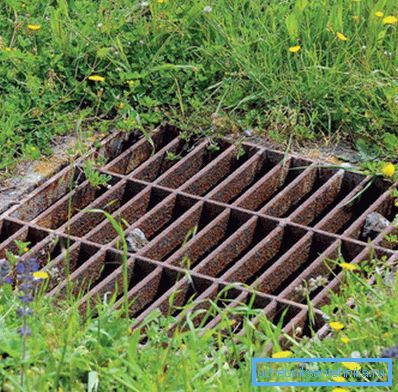
It is necessary to distinguish:
- the constant groundwater horizon, which should be taken for granted, since you cannot do anything with it;
- upper layer, which is formed from precipitation or melting snow. It is possible to minimize its harmful effects with your own hands, quickly and without much financial expense.
However, to resolve the issue, it is necessary to figure out where the top is coming from in order to work out a mechanism for getting rid of it. Without knowledge of the nature of the soil and its features in your area is almost impossible to do.
Soil structure
It is usually heterogeneous, where in turn there are more or less permeable layers. The first include sandy soils, called sandy loam, and the second - clay or loam.
Water gets into the ground from above when the snow melts or it rains. As a rule, the topmost layer is permeable, so moisture quickly rushes down until it meets the first impermeable layer.
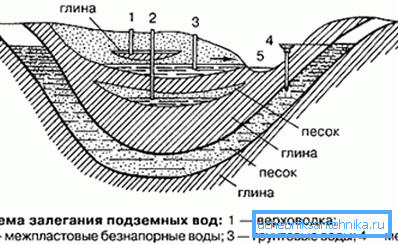
Then it begins to accumulate in the "lenses" or underground "lakes". It happens that such reserves are so large that they are beginning to be taken for permanent groundwater, arranging wells and wells.
However, most often only a few cubic meters or even hundreds of liters of water accumulate here. They gradually pass even lower and are distributed on lower permeable layers of soil. Flowing from one waterproof layer to the other, water from the surface turns into permanent groundwater.
What can you expect
If you have sandy soils on the plot, you will begin to experience the action of the water ridge for 1-2 months a year, when the snow begins to melt intensively or rainfall falls. However, during this period, the water will bring a lot of trouble, undermining the foundation or flooding the basement.
When the soil on the territory is predominantly waterproof, containing a large amount of clay, the water pipe brings trouble throughout the year, despite the cold weather in winter. Water permeates the ground to such an extent that it becomes very heaving (moisture expands when it freezes by 9%), making construction extremely difficult.

What should be done
In order to make life easier in the country and get rid of the water pipe, you should do drainage work. They will make it possible to quickly and quickly take it to a certain place. Most often for this purpose drainage wells are used.
Having drilled the waterproof layers, we will open a fast and direct path to the bottom to the bottom. Drilling to the water, as many think, is a mistake. The aquifer serves as a source of clean drinking water, and adding to it an unfiltered liquid from the surface means to spoil its quality.
And even if today everyone is trying to use water from a well through a filter, there is no need to complicate the situation. Therefore, the drilling of a drainage well should be carried out to the minimum necessary depth.
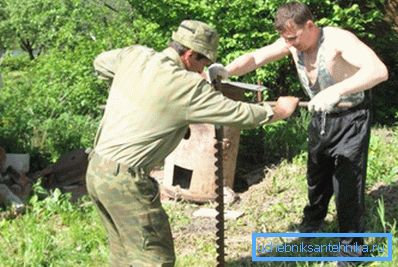
You will agree that even if you “pierce” 1-2 waterproof layers, you will receive whole horizons for use, which will be ready to take over. It should be understood that the main problem is the uppermost layers of the soil, and it is often enough to drill only them to remove the overhead from the site.
Experts believe that along the perimeter of the drainage well, hydroconus is obtained with opening angles of 45? from the vertical axis. Therefore, the closer to the well, the better it dries the soil. However, this is all quite conditional, because the structure of the soil is included in the case, how the impermeable layers and other factors are located.
But, as a starting point for calculating the number of drainage wells required on the site, their frequency, location and depth, this parameter suits everyone perfectly. It does not matter what diameter the well will have, for example, 100 mm or 150 mm will provide a huge drainage, those more if there are a lot of them.
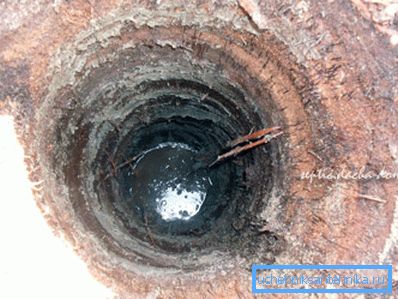
Device
In order to make a drainage well, it is necessary to prepare the materials at hand, the price of which is quite affordable for everyone:
- haydite or washed large crushed stone;
- a small amount of polypropylene fabric, it is often used for the manufacture of garbage bags, or non-woven material such as "Spunbond", "Agril", fiberglass; stapler with staples;
- thin wooden rod the size of the depth of the well.
You can, of course, use a special drainage pipe, even an improvised one. Although this will increase the cost of work, but it will greatly facilitate them.
Below is a guide:
- Drill a brown well, the depth of which is pre-determined by the structure of the soil and the needs. In some areas, 3-4 m is sufficient, although usually the waterproof layers end at 12 m. In this case, it is necessary to provide quick access to water-permeable layers, which can receive water in large quantities and distribute it.
- Make a “stocking” of fabric, so you can protect the well from tightening with sand and quick silting. You can make it with the help of a sewing machine, if anyone knows how to use it, or “shoot” a stapler to a wooden rail, leaving a diameter slightly larger than a drilled hole. It's okay that the tree eventually rot in the well. It is necessary only at the first stage in order to give the “stocking” the desired shape before it is filled with rubble.
Tip: do not fill the rigid drain pipe.
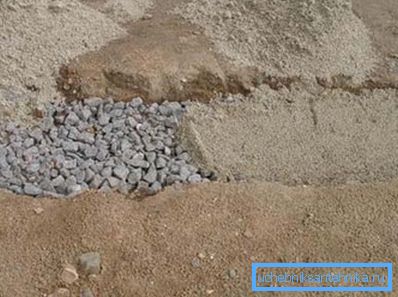
Crushed stone allows you to keep the well shape and is a kind of casing. Its permeability is absolute, the structure is meant, the water through it goes instantly, so you don’t need a drainage pump for the well. Carefully fill the well to the top with washed gravel.
- Cover the hole with a waterproof lid, often use just PVC film, and fill it with a small layer of soil. The structure will not be visible, but it will do its job for many years, diverting thawed and rainwater from the ground down. This will provide an opportunity to protect the foundation and basements from destruction.
Tip: if you have solid clay on the site, and it is difficult to drill it, and the water is close, you must still drill at least one well to drain the soil on the territory.
Conclusion
The creation of drainage wells on the site will relieve their owners from periodic or permanent water supply, water that accumulates on the surface of the soil. It is not difficult to make them independently, and they do not require any special financial expenses. In the presented video in this article you will find additional information on this topic.